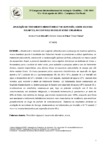Por favor, use este identificador para citar o enlazar este ítem:
http://www.alice.cnptia.embrapa.br/alice/handle/doc/1006648Registro completo de metadatos
| Campo DC | Valor | Lengua/Idioma |
|---|---|---|
| dc.contributor.author | VIECELLI, M. P. | pt_BR |
| dc.contributor.author | SILVA, A. M. | pt_BR |
| dc.contributor.author | TERAO, D. | pt_BR |
| dc.date.accessioned | 2015-01-26T11:11:11Z | pt_BR |
| dc.date.available | 2015-01-26T11:11:11Z | pt_BR |
| dc.date.created | 2015-01-26 | pt_BR |
| dc.date.issued | 2014 | pt_BR |
| dc.identifier.citation | In: CONGRESSO INTERINSTITUCIONAL DE INICIAÇÃO CIENTÍFICA, 8., 2014, Campinas. Anais... Campinas: Instituto Agronômico, 2014. RE Nº 14416. | pt_BR |
| dc.identifier.uri | http://www.alice.cnptia.embrapa.br/alice/handle/doc/1006648 | pt_BR |
| dc.description | Atualmente o mercado vem exigindo alimentos sem a presença de resíduos químicos, mas a incerteza quanto à sanidade das frutas tem levado os produtores a utilizar agrotóxicos, no tratamento pós-colheita, provocando a contaminação química da fruta, colocando em risco a saúde do consumidor. Assim o presente trabalho teve como objetivo determinar os binômios de tempo e temperatura para o controle do bolor verde, para subsidiar a pesquisa sobre o uso do tratamento térmico, visando disponibilizar uma técnica limpa no tratamento pós-colheita de laranja que não deixe resíduo tóxico. Os frutos passaram pelos tratamento hidrotérmicos: de aspersão de água quente a 52oC durante 60 s e nas temperaturas: 55, 60, 65 e 70oC, durante 30 s e imersão em água à temperatura de 52oC durante 2 min e em seguida, aspersão de água a 20oC, durante dois minutos, para encerrar o efeito do tratamento térmico. Os tratamentos foram comparados ao fungicida thiabendazole e a testemunha que foi tratada com aspersão de água a 20oC durante 30 s. Analisando-se os resultados, observou-se que, logo na primeira avaliação aos 8 dias de armazenamento, em ambiente refrigerado, o tratamento testemunha já apresentava ao redor de 90% de frutas com sintoma da doença, que evoluiu rapidamente para 100%, enquanto que frutos que receberam o tratamento hidrotérmico iniciaram com níveis baixos de incidência, que evoluíram gradativamente ao longo do período de armazenamento. Observou-se resultados similares na avaliação da severidade da doença, destacando-se os tratamentos por imersão a 52 oC durante 2 min e na mesma temperatura por aspersão durante 60 s. Abstract: Currently the market is demanding food without the presence of chemical residues, but uncertainty as to the sanity of the fruit has led producers to use pesticides in post-harvest treatments, causing chemical contamination of fruit placing at risk the health of the consumer. Thus, the present work had as objective to determine the binomials of time and temperature for the control of green mold, to subsidize research on use of heat treatment, aiming to provide a clean technique in the post-harvest treatment of orange that does not leave toxic residue. The fruits have passed by hydrothermal treatment: hot water sprinkler at 52° C during 60 s and at temperatures: 55, 60, 65 and 70°C for 30 s and immersion in water at temperature of 52° C for two minutes and then sprinkling water at 20°C for two minutes, to finish the effect of heat treatment. The treatments were compared to the fungicide thiabendazole and control, by sprinkling water at 20oC for 30 s. Analyzing the results, it was observed that at the first assessment 8 days of storage in refrigerated environment, while control has presented around 90% of fruit with the symptom of the disease, which evolved quickly to 100%. Fruit treated with hydrothermal treatment started with low levels of incidence, which evolved gradually over the period of storage. Similar results were obtained for severity evaluation, highlighting the immersion treatment at 52°C water during two minutes and at the same temperature by sprinkling during 60 s. | pt_BR |
| dc.language.iso | por | pt_BR |
| dc.rights | openAccess | pt_BR |
| dc.subject | Tratamento alternativo | pt_BR |
| dc.subject | Citros | pt_BR |
| dc.subject | Plant disease and disorders | pt_BR |
| dc.title | Aplicação de tratamento hidrotérmico por aspersão, sobre escovas rolantes, no controle do bolor verde em laranja. | pt_BR |
| dc.type | Artigo em anais e proceedings | pt_BR |
| dc.date.updated | 2015-01-26T11:11:11Z | pt_BR |
| dc.subject.thesagro | Penicillium digitatum | pt_BR |
| dc.subject.thesagro | Fruta cítrica | pt_BR |
| dc.subject.thesagro | Doença de planta | pt_BR |
| dc.subject.thesagro | Laranja | pt_BR |
| dc.subject.thesagro | Pós-colheita | pt_BR |
| dc.subject.thesagro | Mofo verde | pt_BR |
| dc.subject.thesagro | Controle térmico | pt_BR |
| dc.subject.nalthesaurus | Postharvest diseases | pt_BR |
| dc.subject.nalthesaurus | Oranges | pt_BR |
| dc.subject.nalthesaurus | Hot water treatment | pt_BR |
| dc.format.extent2 | 7 p. | pt_BR |
| riaa.ainfo.id | 1006648 | pt_BR |
| riaa.ainfo.lastupdate | 2015-01-26 | pt_BR |
| dc.contributor.institution | MONICA PIROLA VIECELLI, FAJ; ADRIANE MARIA DA SILVA, FAJ; DANIEL TERAO, CNPMA. | pt_BR |
| Aparece en las colecciones: | Artigo em anais de congresso (CNPMA)  | |
Ficheros en este ítem:
| Fichero | Descripción | Tamaño | Formato | |
|---|---|---|---|---|
| 2014AA32.pdf | 321,86 kB | Adobe PDF |  Visualizar/Abrir |









